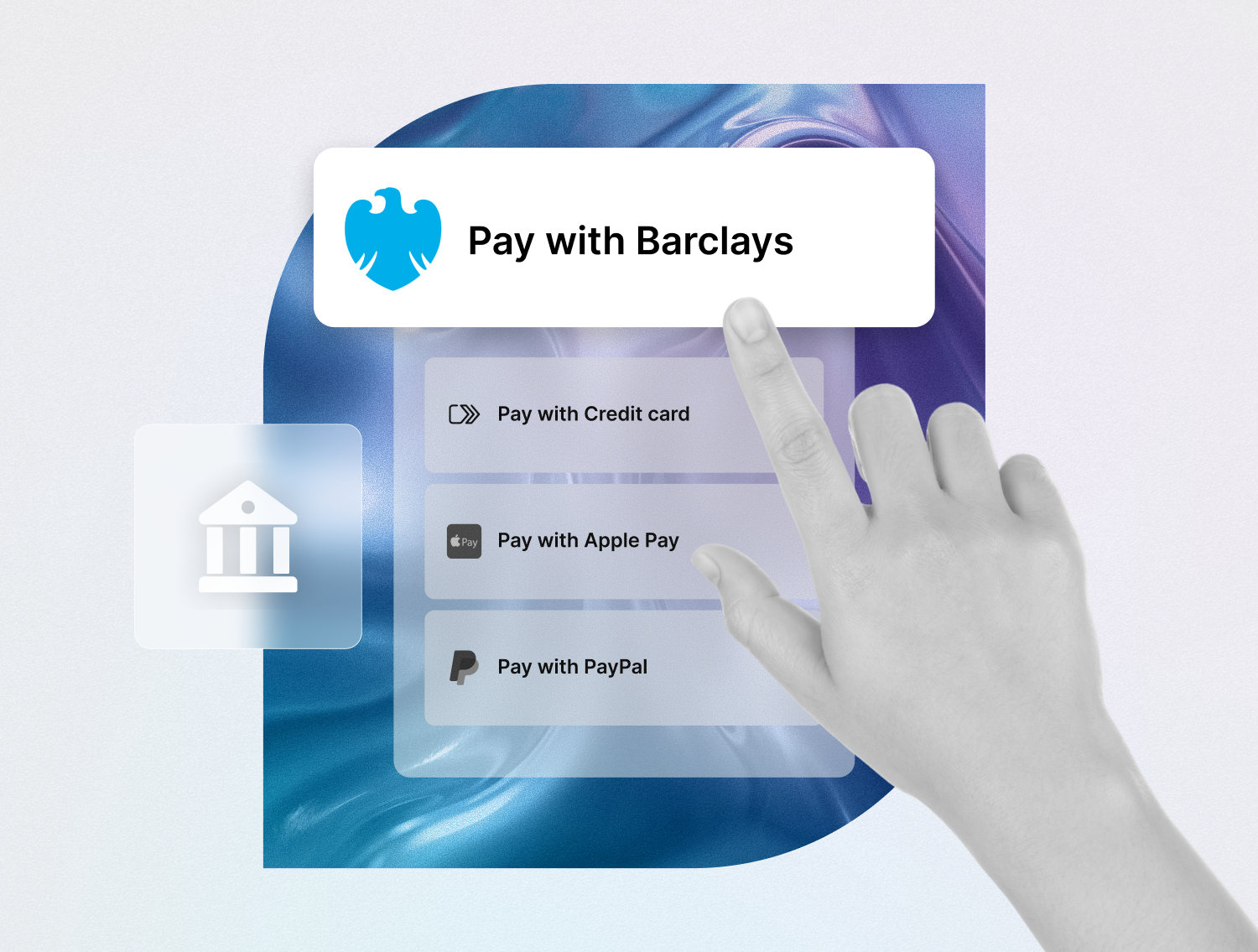What is Open Banking in the UK?
Open banking is a regulatory and technological framework that allows consumers and businesses in the United Kingdom (UK) and European Union (EU) to securely connect their bank accounts and share their financial data (bank account information, balances, transactions, etc.) with authorized third-party providers (TPPs) via standardized APIs. With the customer’s permission, these TPPs can offer two main services:
- Initiate payments on the user’s behalf: These are called Payment Initiation Service Providers, or PISPs.
- Access and collect account information: These are known as Account Information Service Providers, or AISPs.
To ensure improved consumer protection and lower fraud rates, the open banking framework also requires heightened security standards to manage consumer authentication and protect consumer data. These requirements are referred to as Strong Customer Authentication (SCA) and mandate, among other things, that all open banking services are provided securely using multi-factor authentication (MFA). This means that to securely approve any payment or action, the user must authenticate their identity, typically through their banking app, and approve the request or payment directly. Nothing can happen without the user’s explicit approval.
To make this secure and scalable, UK regulators required all major banks to implement standardised APIs. These APIs allow licensed developers to build services on top of bank infrastructure without compromising customer security.
Open Banking in the United Kingdom: From Regulation to Real-World Adoption
Open banking started as a regulatory initiative under the European PSD2 directive, with the goal of increasing competition, transparency, and innovation in financial services. In the UK, it was driven by the Competition and Markets Authority (CMA) through the creation of the Open Banking Limited (formerly the OBIE).
Today, open banking is no longer experimental. In the UK alone, over 15 million users rely on open banking services every month, and the infrastructure is subject to oversight and control from the Financial Conduct Authority (FCA). Payments settle in real time over the Faster Payments network, making “pay by bank” a secure and viable alternative to card payments.
Open Banking Use Cases
Open banking is already powering a range of useful services across the UK and the EU. Here are a few common examples:
- Payment Initiation
Users can bypass card networks and other antiquated payments infrastructure and instead pay directly from their bank accounts. This includes retail options like Pay by Bank at checkout, as well as services to streamline various B2B payments such as invoicing and insurance payouts, in each case providing payment services that are faster and more secure, while simultaneously reducing the risk of fraud or chargebacks. - Account aggregation, personal finance tools and budgeting apps
Apps like Emma, Moneyhub, and Snoop use open banking to show users all their bank accounts in one place to track spending, providing cash flow analytics and suggesting ways to save money. - Credit Underwriting
Lenders can use open banking to provide faster lending and credit checks, instantly verify income and spending history to make loan approvals faster and more accurate. - Small business accounting tools
Platforms like Xero and QuickBooks can automatically pull in bank transactions to simplify bookkeeping and cash flow tracking. - Subscription and payment management
Some services help users find and manage their subscriptions or recurring payments, making it easier to cancel unused services and avoid hidden fees.
Benefits of Open Banking for UK businesses and consumers
For Merchants
- Instant settlement
Payments clear in seconds via Faster Payments, helping improve float and cash flow. - No chargebacks or card fraud
Payments are authenticated by the customer’s bank, removing fraud risk and related disputes. No card network mandated chargebacks. - Lower fees
By bypassing card networks and intermediaries, businesses can reduce processing costs.
For Customers
- Stronger protection against fraud
Every payment requires secure bank authentication. No card numbers means nothing to steal. - Faster checkout
Customers approve payments directly in their banking app, often with biometrics or two factor login. - Real time control and visibility
Payments are authorised through the customer’s own bank, with instant confirmation and a clear transaction record.
How Open Banking Payments Work in the UK and How to Get Started
If you are a UK business looking to accept open banking payments, the process can be time consuming and complex. Here’s what most businesses face:
- Work with a licensed open banking provider
These are regulated third party providers, also known as TPPs, that connect your business to customer bank accounts and charge fees for the open banking services they provide. Many of the leading TPPs in the UK and EU provide varying and inconsistent levels of coverage and support for their services. It can take significant time and resources to find the TPP that’s right for your business. - Build an integration
Implementing open banking directly usually requires development resources. Each TPP has its own intricate API integration and onboarding process, which can take time and significant technical expertise to implement, especially if you want to connect to multiple banks or operate in several regions. - You handle compliance and user experience
You will also need to ensure that your solution meets payment regulations, supports Strong Customer Authentication, and provides a smooth experience for customers selecting their bank and approving the payment.
Open Banking Payment Flow in the UK
- Customer selects Pay by Bank at checkout and chooses their bank from a list
- They are redirected to their bank app or online banking with transaction details pre-filled
- The customer completes Strong Customer Authentication (SCA) using biometrics or two factor login
- Payment is approved and funds are transferred directly to the merchant via Faster Payments
- Customer is redirected back to the merchant with instant confirmation
How Quidkey Simplifies Open Banking Payments
At Quidkey, we handle the complexity so you can be free to focus on your business. Our platform connects to multiple third party providers across different markets and automatically selects the best provider for each payment to ensure the highest success rate. We manage all bank integrations, support currency exchange and cross border payments, and provide a single interface for your business to start accepting open banking payments.Additionally, our predictive algorithm automatically identifies and displays the customer’s bank at checkout, making the experience faster, more intuitive, and built on the trust customers already have with their bank. This leads to higher conversion rates.
Quidkey vs Traditional Open Banking Solutions (Tink, TrueLayer, Token, Yapily, Plaid and more..)
Quidkey simplifies payments so you can focus on growing your business. Accept payments across borders, support multiple currencies, and go live in minutes.
What Quidkey Adds to Open Banking
Open banking provides the rails. Quidkey makes them usable.
While providers like Tink, TrueLayer, and Token offer secure access to bank accounts, they stop short of delivering the full checkout experience. Quidkey fills that gap by combining real time orchestration, predictive bank selection, platform integrations, and built in cross border support. It turns fragmented infrastructure into a single, conversion optimised payment product that merchants can go live with in minutes, with no developer required.
Get Started with Quidkey
Quidkey is not just another payment provider. It’s open banking actually done right.
Instant payouts. No fraud. No chargebacks. Lower fees. Seamless integration.
Go live in minutes and take control of how your business gets paid.





